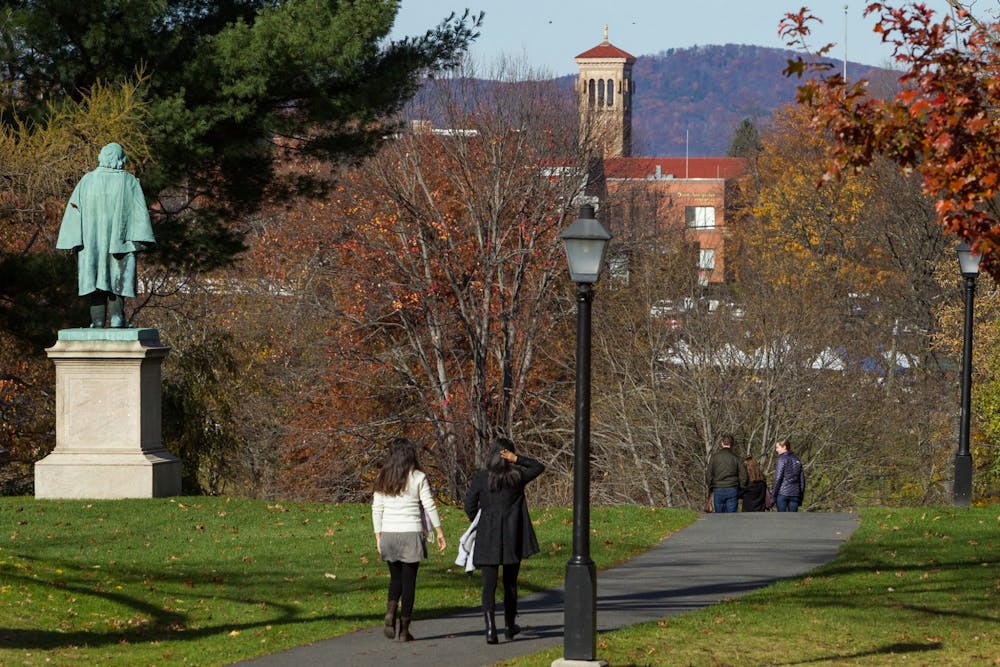Last month, Amherst College announced that it will end legacy admission preferences beginning next year. In doing so, Amherst joins a range of colleges from elite private schools including Johns Hopkins, Pomona, and MIT, alongside public universities including the University of California and the University of Texas. Ending legacy preferences is a significant commitment to expanding access and equity, and Princeton and other schools should follow suit.
The fundamental function of legacy admission preferences is to concentrate privilege. It grants an advantage to students for an attribute they have no control over, and did not earn.
College admissions is a notoriously opaque process. You’ve likely heard the term “holistic admissions” more times than you can count while on tours at various universities. It’s true, there are countless characteristics that universities take into account when evaluating applicants, from test scores to family background to athletic achievements. But granting preference due to legacy status is fundamentally different from those other traits.
For one, legacy status is an unearned attribute. You may disagree with preferences for recruited athletes, but athletes who are recruited have earned their place. There are disparities in access to elite training that makes some sports less diverse than others, but regardless, a given athlete applying to a school has earned their achievement and their skill is in part a reflection of their own effort. Legacy admissions is comparable to being recruited as a fencer solely because your mother fenced at Princeton. Being a legacy has no inherent correlation with a student’s actual academic ability or what kind of student they would be in this community. And while legacy is never the sole reason a student is admitted, no one should get an extra push over the line because of who their parents are.
One could argue that a student’s racial background is also beyond their control, and thus affirmative action is equally unjust. But affirmative action does not reinforce privilege — it does the opposite. Affirmative action seeks to take into account historical disadvantages and the ways that having a more diverse student body will enhance the University community by exposing students to differing perspectives.
Princeton has as great a need to abandon legacy admissions as Amherst did. At Amherst, legacy students comprise about 11 percent of each class. In Princeton’s Class of 2025, 10 percent of students are legacies, a decline from the Class of 2024’s 11.3 percent. That means more students in the Class of 2025 are legacies than are Black — eight percent are Black.
Take the Class of 2022’s admission cycle for example, for which there is more comprehensive data available. Of the 35,370 applicants, two percent were children of alumni. Nearly a third of those legacy students were admitted, compared with an overall admission rate of 5.5 percent. 14.3 percent of the resulting Class of 2022 are legacy students. The admission rate for students of color was 6.2 percent. Thus, the benefit granted to legacy students far outstrips any other toe on the scale for other student traits. It is a unique and unearned benefit.
A common argument for legacy admissions is that it strengthens the connection between alumni and the University, making alumni more likely to give back to the University. These contributions, so the argument goes, are what makes it possible for Princeton to support students to the extent that it does.

But the University just announced that its endowment has grown to $37.7 billion, the third-highest in the Ivy League and the fourth-highest nationwide, just behind Stanford. Not only that, Princeton’s 46.9 percent year-over-year return was the second-highest of the Ivies and shows that the endowment is as strong as ever. It is hard to argue that the University relies on comparatively small contributions from alumni to keep the doors open. There’s even an argument to be made that Princeton does not need to charge students tuition at all.
We should all hope that our relationship with this university is more than just a transactional agreement that alumni donations will lead to a leg up in admissions. Princeton should earn our donations through the quality of our experiences here, not because of some hope of future benefit.
University spokesman Ben Chang recently defended Princeton’s legacy policy, telling the Wall Street Journal that “as our student body diversifies, our alumni body diversifies, and, in turn, the children of alumni diversify.” But the fact remains that legacy students are more likely to be wealthy and white than other students, as analysis of Harvard’s admissions process shows. In Harvard’s Class of 2019, 70 percent of legacy admits were white, while 41 percent of legacy students had parents who earned more than $500,000 per year (meaning nearly half of legacy students were part of the top one percent of US income). At Princeton, 73 percent of legacy students in the Class of 2023 are white.
It’s hard to argue a system like this advances diversity. The exclusive realities of legacy preferences far outweigh its potential for indirectly improving inclusivity in future generations. If Princeton wants to diversify its student body, there are far more direct and effective measures it can take.

I’m a legacy student, and I am glad to be a Princetonian. But, as Rachel Kennedy wrote in 2019, our path here should not be easier than anyone else’s just because our parents attended. All of us have a responsibility to reflect on the inequitable structures that shape our lives, and legacy preference, and the broader system of college admissions, is part of that. Other schools are starting to take on this issue — can Princeton be next?
Julia Chaffers is a senior history concentrator from Wellesley, Mass. She can be reached at chaffers@princeton.edu.








